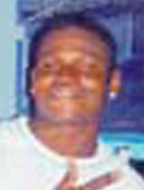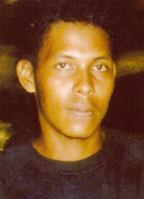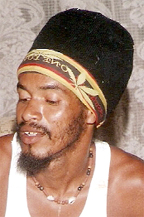– forty-eight are murders
With half the year gone, police investigators are faced with a pile-up of unsolved serious crimes, including seven executions, two grenade attacks and a deadly shoot-out at Mousie Landing that claimed two lives.

Last year, Crime Chief Seelall Persaud had told this newspaper that solving crimes was challenging and attributed that to the force’s limited forensic capacity, lack of cooperation from witnesses and the public and the exodus of experienced officers. Several efforts to contact Persaud during last week, for an update on these issues and the high rate of unsolved crimes were unsuccessful
For this report 62 serious crimes, which all occurred within the first six months of this year, were taken into consideration: 59 murders, two grenade attacks and one shooting attack on a city businessman.

Of the murders only 11 have seen charges being laid. Forty-eight murders and three other serious crimes remain unsolved; placing the police crime-solving failure rate at 82 per cent (rounded figure).
Investigating execution style killings has been difficult for the police. For this year, police have investigated seven and while persons were arrested and questioned and leads followed, nothing concrete was found.


Speaking to Stabroek News last month on the execution-style killings of businessman Terry Bacchus and security officer Sidwell Dexter Collins which occurred in May, Persaud had said that the police had made little progress in those investigations.
During the telephone interview the Crime Chief had stated that it was unclear under what circumstances Bacchus died as a gold chain the man was wearing the night he died was discovered missing. However, observers have noted that Bacchus’ jewellery could have been taken after he was murdered.
As for Collins’ case, Persaud had said there was information offering many leads but investigating them has been extremely difficult and there really was nothing concrete to work with. During the interview, he said that the lack of witnesses and the reluctance of some witnesses to speak increased the difficulty of solving these kinds of cases.
When investigating any crime, be it murder or larceny, he pointed out that the police would use their training, logistics and the legislative framework provided to them.


Police have been able to gather little or no information in the other five executions – Vibert Weekes, Nicholas Hoyte, Rajendra Motilall Sonilall, Ryan Brimmer and Jamal ‘Radio’ Beete, the brother of wanted man ‘Cobra’.
Stabroek News records show that guns were responsible for many of the murders in the first half followed by chopping and battering; stabbing, burning and strangulation.
Lawless interior
Between January 1 and June 30, eight persons were killed in the interior regions. Five died from gun shot injuries, two were chopped/knifed and one was battered. Seven were miners while the eighth, a woman – Donna Williams – was stabbed to death by an unknown man said to be a former boyfriend.
The deadly shootout at Mousie Landing, on June 21 highlighted just how lawless the interior is and observers have questioned the lack of law enforcement in that area and the easy access to weapons.
During that incident, dredge owner Davindra Williams and Oswald Bourne were killed while a third man, Clifton Andrews was injured. While the information is sketchy the police had said that just after midnight Williams and Andrews, who is a miner, were walking along a road at Mousie Landing when they were ambushed by two men. The dredge owner and one of the attackers, identified as Bourne who was also a miner, exchanged gunfire.


During the shooting Bourne and the dredge owner were fatally wounded and Andrews sustained a gunshot wound to the chest. The second assailant escaped but police later arrested the suspect’s brother.
When quizzed about serious crimes and gun violence in the interior, during an interview in May, the Crime Chief had said that it was difficult to tackle the problem because of the geography of the area, the scattered population and inadequate communication.
In spite of this, he said police continue to conduct stop and search exercises, regularly patrol mining and logging communities and have been working closely with companies to try and bring the situation under control.
There were also rural constables, special constabulary ranks and supernumerary constables who provided security in some of these settlements, and who had certain powers conferred on them by the police.
Residents too, Persaud told this newspaper, assisted the police by catching suspects from time to time.

Another problem is that in this region the police stations are far apart and the station districts are big. There are some instances where ranks from Georgetown have to travel to the area to investigate reports of serious crimes.
The dense bushes create the perfect hide out for gunmen before and after they commit crimes.
Baffling attack
Who shot Ravi Ramlall on June 24 and why. The La Penitence businessman who is nursing a gunshot wound to the shoulder had told Stabroek News from his hospital bed that the incident was baffling. A senior police officer said recently that investigators have no leads in the case.
The man had recounted that he was standing in front of his home with friends around 3 am when a masked gunman approached from a nearby dam and discharged two rounds at him; one hit him in the shoulder and the other missed.
Despite being wounded, Ramlall said, he managed to discharge two rounds from his licenced firearm at his attacker, who was running back towards the dam. He could not say if the gunman was wounded.
The man had questioned the reason behind the shooting as he has no problems with anyone. The area were the incident occurred was well lit and the gunman struck shortly after Ramlall had returned home after a night out with friends.
From all indications, the businessman’s moves were being closely monitored. When the gunman came up, no demands were made or valuables taken but instead he opened fire and from all appearances Ramlall was his target.
Residents this newspaper spoke to said they did not witness the shooting or see the shooter and only became aware of the incident when they heard the gunshots. By the time they looked out, they had said that the shooter had already led the scene.
Police had scoured the area hours after the incident occurred but it is unclear if any spent shells were found.
Grenade attacks
There have been two grenade attacks and the police have been unable to trace their origin or the reason behind their use. On March 23, a live grenade was hurled at the home of Guyana Energy Agency (GEA) head Mahender Sharma but it didn’t go off. Around 23:30 hrs Sharma heard a noise on the premises of his residence at Lot 263 Bissessar Avenue, Prashad Nagar, George-town. About two hours later as he was letting a guest out, he found a fragmentation grenade in the yard. The grenade did not explode when it was thrown but shattered an emergency light located at the front of the building. Police were later contacted. The device was removed by investigators, who then combed the area but came up empty-handed. No one living close by saw anything suspicious.
While Sharma said that he was unaware of a motive, Prime Minister Samuel had said in a press release that the incident was sparked by the excellent work that the GEA head was doing to catch fuel smugglers.
About two months later, a live grenade was lobbed at the Queens-town property of an Essequibo businessman. Minor damage was done to the property and the owner Doodnauth Samaroo has since said that it may have been a case of jealousy.
According to the crime chief, investigators have found no connection between the two attacks. Only the military he had noted is authorised to be in possession of grenades.
